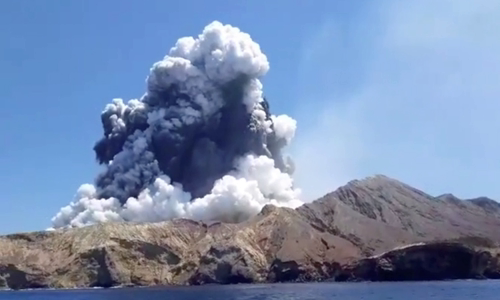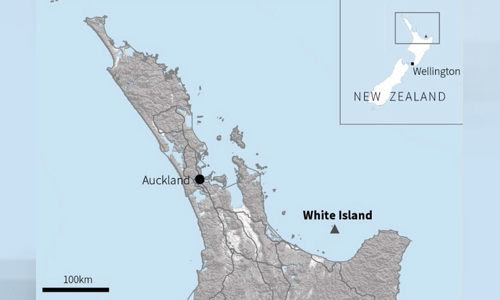Just before one of New Zealand's most active volcanoes on White Island erupted, about 50 tourists still tour nearby.
White Island is located on Plenty Bay, about 48 km from New Zealand's east coast. This is a popular tourist destination with day tours and sightseeing flights. Some travel operators call the landscape "a geological giant living and breathing", or "the world's most accessible ocean active volcano".

Volcanoes on White Island, New Zealand erupted on December 9 Photo: Reuters
Dozens of tourists, including many foreigners, were on the island at the time of the volcano eruption on December 9, creating a column of smoke about 3,600 m high. More than 30 people were seriously injured, 5 people were confirmed dead and 8 people missing, but there seemed no chance of survival.
The incident raised doubts about the safety of the White Island tour, as well as the reliability of the volcanic warning system.
"The island contains a catastrophe that has been waiting for many years. I have been there twice and always feel this place is too dangerous to take visitors every day by boat and helicopter," Ray Cas, specializing in at Monash University, Australia, comments.
Jan Lindsay, a professor at the University of Auckland, said White Island "is constantly moving, has a very strong hydrothermal system." Although there were not many magma-related eruptions, the ashes occurred periodically on the island, along with the appearance of "lakes mixed with gas".
"The remarkable thing on White Island is that there is so much gas coming out of the volcano, accompanied by countless crystalline minerals," said Ben Kennedy, professor of volcanic physics at the University of Canterbury. "Mineral crystals crystallize at greater depths will clog, causing the volcano to 'clear its throat' periodically."
Kennedy also said that volcanoes on White Island in the past 8 years were "in a state of high activity" with 6 small eruptions, a phenomenon that can occur at any time. The last time an intense eruption occurred in 1914, killing 12 sulfur miners.
Experts say unusual activity at the volcano was alerted before the December 9 eruption. In the previous weeks, the volcano warning scale has been raised from level one, meaning minor instability, to level two, indicating moderate to high instability.
"Everyone is aware that the level of instability has increased," Lindsay said, but added that this did not help predict what would happen. According to the professor, the eruption seemed to be unrelated to magma, making detection difficult.

White Island location off New Zealand Photo: Reuters
"The seismic activity governed by hydrothermal systems differs from that from the magma chamber beneath the volcano. You may not be able to detect it if it occurs at a small depth," she explained. The incident on December 9 was classified as a third level, meaning "small volcanic eruption", because it affected only the crater area.
White Island location off New Zealand. Graphics: Reuters.
White Island was bought by securities broker George Raymond Buttle in Auckland in 1936. He refused to resell it to the government and in 1952 declared it a private scenic spot. The island is still owned by the Buttle family.
Each year more than 10,000 visitors to White Island. According to the information on the New Zealand Travel Guide page, island tour owners are appointed as guardians of the island and only tour operators are allowed access to the island.
Lindsay said the GNS Science Research Institute "also issued a warning message, maintained contact with travel companies and they knew what the risk was". "They are accustomed to volcanic activity. However, such incidents have not occurred for many years despite having appeared in the past. This time may change the way they operate in the future." she said.
Professor said people near the groundwater eruption often died from steam and hot water, or materials erupting from volcanoes with strong force. Geoff Hopkins, one of the tourists who fled the island, said many survivors were badly burned.
If counting the lower part of the ocean accounts for about 70%, the volcano on White Island is New Zealand's largest volcanic structure. Professor Kennedy judged the island to be as "from another world". This location has appeared in many works and became the backdrop for the third part of the famous series "Chronicle of Narnia".
"However, you should wear a gas mask when you go there because of the strong sulfur gas. Visitors can also hear the noise of the gas emitted from the volcano, an intense and wonderful experience. But you should escape. get out of here quickly, "he said.



 JoseLuisLopez
JoseLuisLopez







